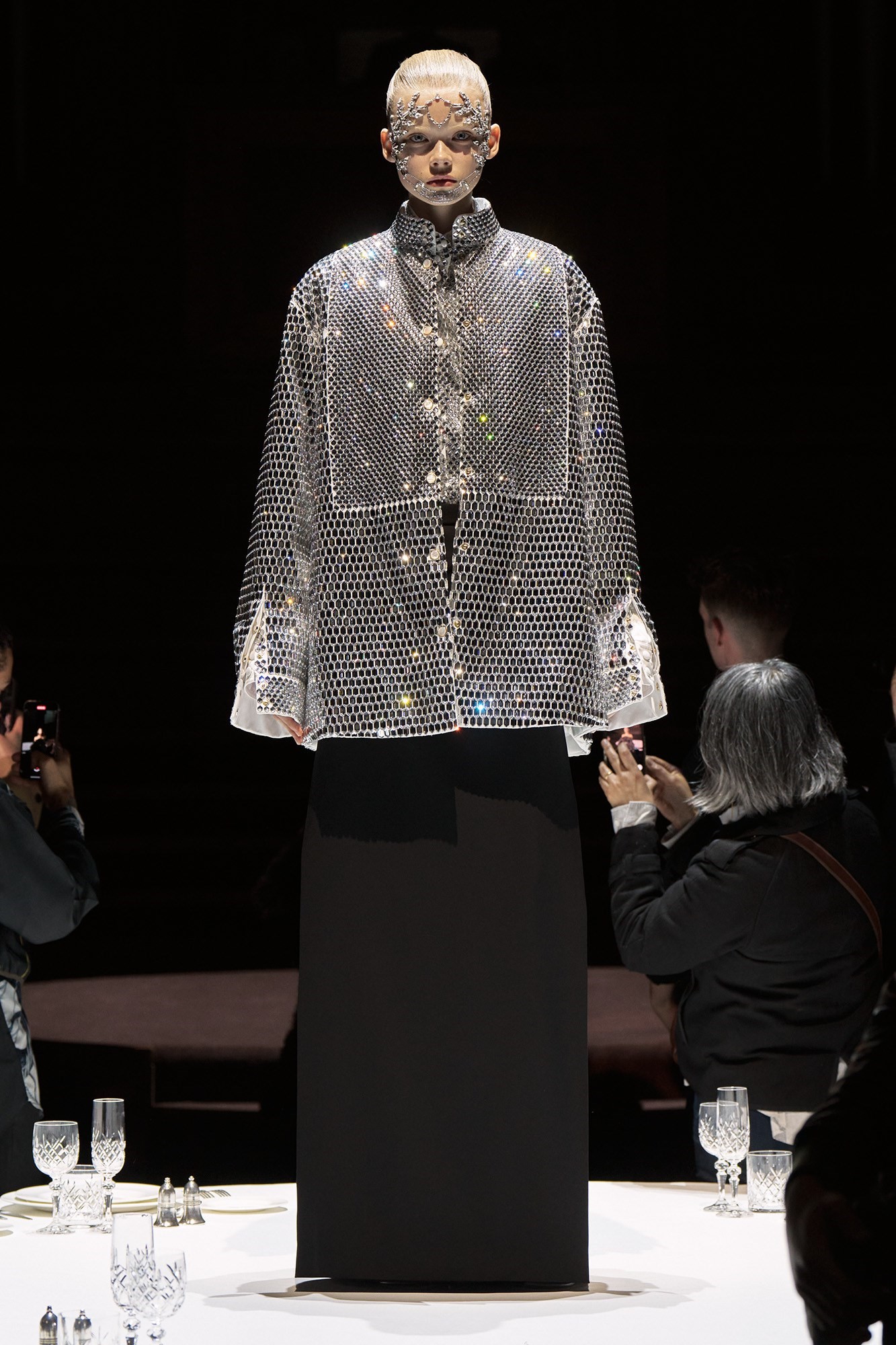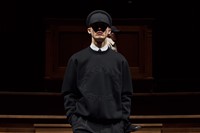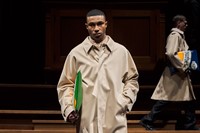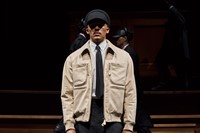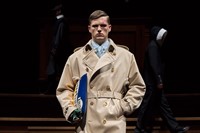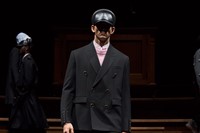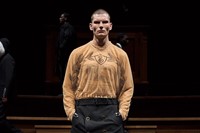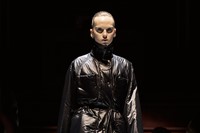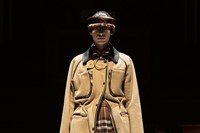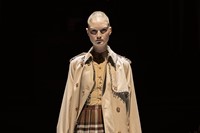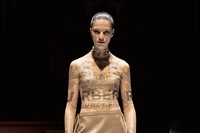Britishness is at the heart of what Riccardo Tisci creates at Burberry: he first came to London when he was 18, and feels the country and its education shaped him, combining the exuberance and rigour of Britain with the sensuality of Italy. Those may seem dichotomous – stiff upper lip and all that – but it is possibly what gives Tisci’s work its edge. It was the same, oddly enough, when he took the reins at Givenchy, a resolutely polite Parisian couture house founded by a patrician aristocrat, the Comte Hubert de Givenchy. Its clothes were often seen as well-mannered, charming, sometimes a little stuffy. Tisci tore the place up.
There was a feel of that to his Autumn/Winter 2022 Burberry collection, shown in the heart of London, a stone’s throw from Westminster Abbey and the Houses of Parliament. In a grand hall set for luncheon, models trod impolitely on table-tops in Tisci’s reconfiguration of Burberry’s ‘Nova’ check – pulled apart into its component colour parts, outfits coloured in beige, brown, and a rich hunting habit barathea wool red. There was also a recoloured variation, the ‘Birch’ check, introduced by Tisci but never shown until today. “Reconstruct, to deconstruct,” was his twisted take on the idea.
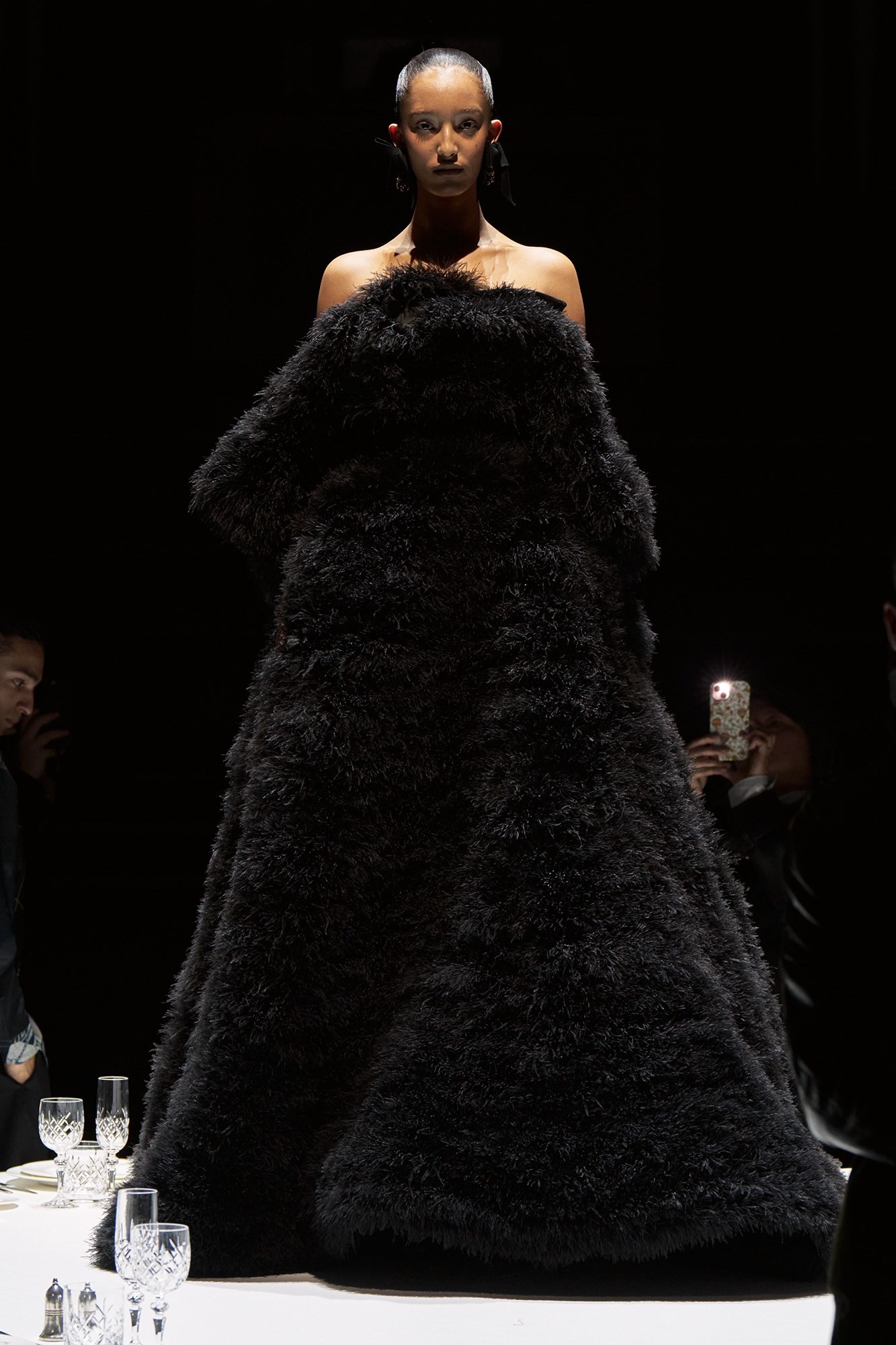

In a sense, this was the most Burberry collection Tisci has created, revolving around the check, the car coat and the trench, three pillars of the house. He has played with them before, of course, in collections exploring the idea of gentlemen and ladies, punks and princesses. But it felt as if, perhaps, the dust had settled on his renovation, including physical changes of retail environments and the ideological shift of the Burberry logotype. So Tisci could look back, reassess the past, and revive some of those quintessentially Burberry aesthetic anchors.
“For an Italian, Britain is important. I studied here, it’s the country that gave me everything. It’s such a historical country, there’s so much to say. To touch that, takes time.” Tisci was talking about a country when he said that, but he could have been talking about the storied history of Burberry. This collection fused the two together, with outdoor clothing redolent of English country life and grand ballgowns apparently crafted from Burberry trench coats, re-engineered for the most formal court presentation or interwar debutante ball. There were twinsets too, embroidered with the historic Burberry knight, first used in 1901. Speaking of knights, there was something cavalier about the menswear, with swaggering shoulders and elongated robes, quasi-religious, semi-ceremonial, reflecting the pomp and circumstance at the heart of the archaic traditions that still cement Britishness in the mind of many – and that are still enacted, every day. Just two hours before the Burberry show and less than half a mile away, outside Buckingham Palace, the Changing of Guard had taken place, as it has since 1837.
Britishness is, of course, an elastic term. For Tisci, couture is British – and, although it’s based in Paris, it was the Englishman Charles Frederick Worth who established it, and had the gall to put his label on the inside of a garment destined for the Empress Eugénie. Around the same time, Thomas Burberry was setting up shop in Basingstoke and thinking of ways to radically alter the way people dress. A kindred spirit: innovation, experimentation, audacity. Tisci’s work reflects those, too.
Tisci said he felt freer with this Burberry collection. “I feel more at home. I can play with it,” he said. His show was presented on the eve of his fourth year at the helm as chief creative officer. The strength of this collection was in that confidence, an assurance in a view of Britishness informed by his education and Burberry’s impressive archives, but formed by instinct. There was a new elegance in the elongated masculine silhouette and those trench ballgowns which encompassed Tisci’s own heritage in French haute couture as well as Burberry’s back catalogue. He was bringing more of himself to the table – and letting the models clamber up onto the cloth, to show it off to the fullest. If this was, perhaps, the most Burberry of Tisci’s collections, it was simultaneously the most him. A satisfying fusion of two heritages, making something new.
